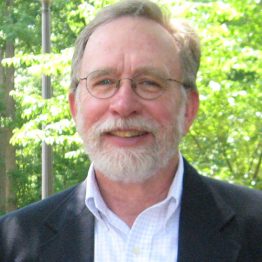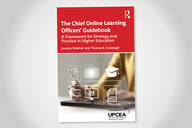You have /5 articles left.
Sign up for a free account or log in.
 A couple of weeks ago we had a good discussion about distributed / long-distance academics.
A couple of weeks ago we had a good discussion about distributed / long-distance academics.
That discussion inspired me to ask my dad, George Masnick, if he’d be willing to share his story of three decades of academic telecommuting.
Q1. Dad, you have been working remotely to as a Senior Research Fellow to Harvard's Joint Center for Housing Studies (JCHS) since 1987 (the year I went off to college). How (and why) in the world have you worked remotely for over 30 years?
Dad’s Answer:
We decided to move to Montana in 1987 for a variety of reasons. My wife Reisa is a western girl and missed it. I thought I might want to do something else with my life besides academia, and the lure of the west was there for me too. We had bought part of a ranch in Hamilton, MT on our honeymoon in 1982 (78 acres) and had been going back to Montana in the summers.
Your brother Max was born in 1986, and the idea of raising him in a small town as opposed to the hubbub of Brookline/Cambridge/Boston was attractive. We bought a historic home in downtown Hamilton that needed a complete renovation/addition, and I loved doing such things. We had no intentions to keep working in either academia or healthcare [Reisa’s profession] in Montana.
When we first moved I was still working on several projects at the Joint Center that I needed to finish up, so I worked remotely part-time. Portable computers (weighing 25-30 lbs.), floppy disks, and Federal Express allowed me to work remotely with only an occasional trip back to Cambridge.
In 1988 we issued our first State of the Nation’s Housing report, which included some of the research I was doing with Bill Apgar and Jim Brown. That led to other sponsored research at the Joint Center that Bill and Jim wanted to keep me involved in if I were interested. Having found no alternative employment yet, I agreed. Still only part-time, and I billed Harvard for the hours worked.
One project led to another.
Reisa started working at St. Patrick Hospital in Missoula (60 miles away) and was able to negotiate working 4-days a week in the office. It became possible to live quite comfortably with both of us working part-time and with a relatively simple lifestyle.
Soon the internet made it even easier for me to work remotely.
So we moved across the country to do different work but wound up doing the same things, but only part-time. That took all the pressure off of needing to do something different because I still had time to do something different. Reisa and I became active in the community and in the schools, and did a lot more with friends.
Q2: Can you talk about what you have learned by working remotely, and what you see as the advantages and disadvantages to both universities and academics for following this type of career?
Dad’s Answer:
If it were not for the high stability of the Joint Center workforce, it would have been much harder to do what I did. I had my niche. If there is a lot of turnover at the Joint Center, then it would have been a different story.
I still attended conferences, presented papers, wrote book chapters, and did guest lectures, so the out-of-office professional activities didn’t change all that much.
Once people began to communicate through email, even when I would go to Harvard and sit in an office, we did much less face-to-face meetings. Sometimes a whole day would pass with only getting together for lunch.
Once that culture took hold it was completely normal for my office to be so far down the hall that it was across the country. We also began to collaborate with others in other institutions with greater ease.
Of course, I had to give up teaching so that became the biggest change for me.
Anything that you’d like to ask my Dad about his experience as a long-distance academic?
Do you have any academic telecommuting stories of your own that you care to share?




